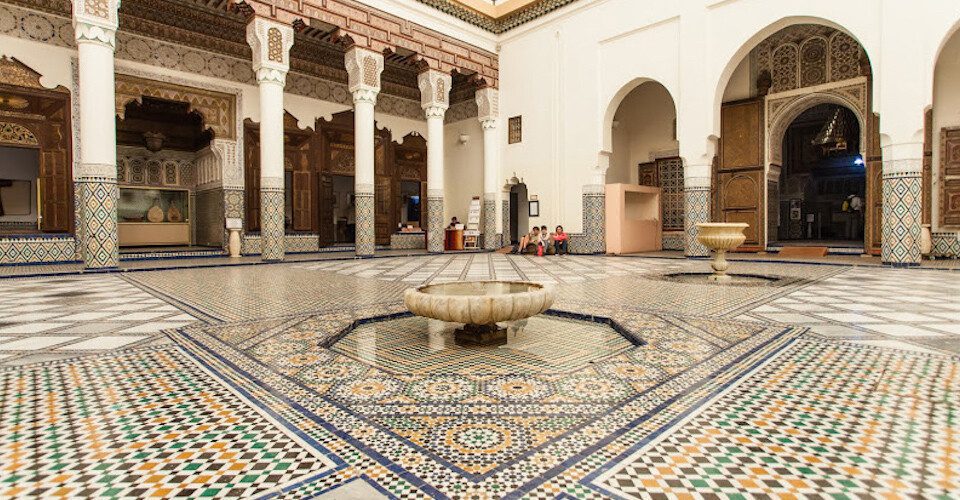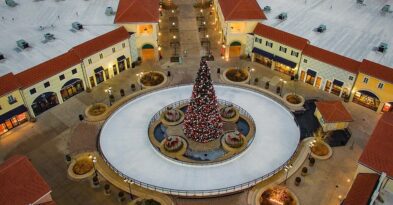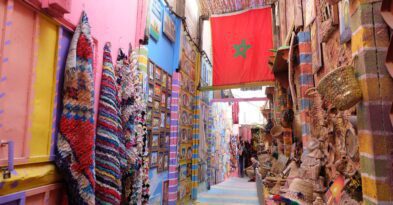Museums In Morocco
Morocco’s profound cultural richness is woven into the fabric of daily life and proudly curated within its diverse museums. These institutions celebrate a wide spectrum of themes, from art and history to artifacts, sciences, and music.
The nation’s distinctive crafts and arts are a tangible tapestry, drawing from Roman, Berber, Arab, Andalusian, and Jewish influences. This unique convergence of inspirations results in an astonishing variety of creative works, each telling a part of Morocco’s storied past.
Rabat
Museum of Modern and Contemporary Art Mohammed VI
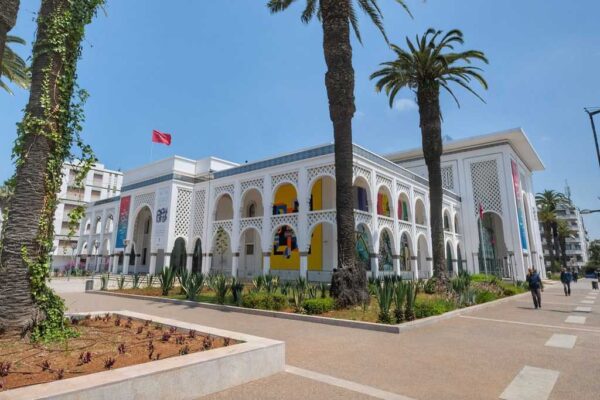
The Mohammed VI Museum of Modern and Contemporary Art (MMVI), one of Morocco’s largest museums, is a cultural landmark in the nation’s capital, Rabat. Since its inauguration in 2014, this flagship institution has been dedicated to preserving, enhancing, and promoting Moroccan artistic creation from the 20th century to the present day. Its modern architecture, a harmonious blend of tradition and innovation, reflects the museum’s forward-looking spirit, offering a bright and welcoming environment ideal for contemplating the artworks.
The museum houses an extensive collection of works by renowned Moroccan artists such as Chaibia Talal, Farid Belkahia, and Ahmed Cherkaoui, while also hosting temporary exhibitions for international artists. Beyond its role as an art gallery, it serves as a vital educational and cultural hub, organizing conferences, workshops, and pedagogical activities.
Visitor Information:
Address: 2 Av. Moulay Hassan, Rabat, Morocco
Opening Hours: Open daily from 10:00 to 18:00. Closed on Tuesdays and national holidays.
Admission: 40 MAD (Adults) / 20 MAD (Visitors under 18)
Read more about Mohammed VI Museum of Modern and Contemporary Art
Museum of History & Civilizations
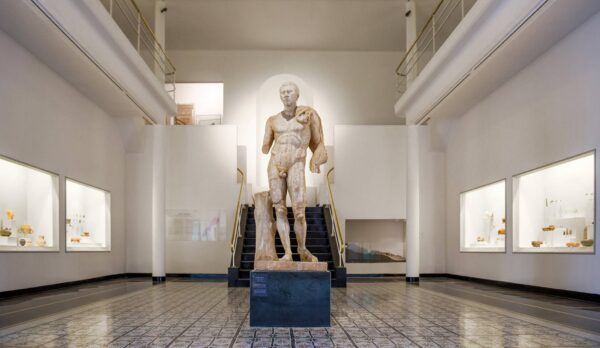
The National Museum of Archaeology, formerly known as the Rabat Archaeological Museum, stands as one of Morocco’s most significant cultural institutions. Originally inaugurated in 1932, it houses the country’s most extensive collection of archaeological artifacts, spanning from Prehistory to the Islamic era. Following a meticulous renovation, it reopened to the public in April 2017, now offering a journey through time with exhibits organized both chronologically and thematically. Key highlights include priceless pieces from major sites like Volubilis, Banasa, and Chellah, featuring the renowned bust of King Juba II and the iconic statuette of the Dog of Volubilis.
Visitor Information:
Address: Av. Moulay Abdelaziz, Rabat, Morocco
Opening Hours: Open daily from 10:00 to 18:00. Closed on Tuesdays.
Admission: 20 MAD (Adults) / 5 MAD (Children under 12)
Read more about Rabat Museum of History and Civilizations
Casablanca
The Jewish Museum of Casablanca
Opened in 1997, the Museum of Moroccan Judaism in Casablanca stands as the only institution in the Arab world dedicated to Jewish heritage. Housed in a building that originally served as a Jewish orphanage, constructed in 1948, it was founded by Simon Levy with the support of the Foundation of Jewish-Moroccan Cultural Heritage. The museum preserves and celebrates over two millennia of Jewish life in Morocco. Its collection features Torah scrolls, menorahs, traditional garments, liturgical objects, photographs, and historical documents that bear witness to the community’s rich cultural and religious tapestry.
A distinctive feature of the museum is its reconstruction of historic synagogues, such as that of Larache, offering visitors an immersive experience of Moroccan Jewish tradition.
Visitor Information:
Address: 81 Rue du chasseur Jules Gros, Casablanca, Morocco
Opening Hours: Monday to Friday, 10:00 to 17:00. Saturdays, 11:00 to 16:00.
Admission: 50 MAD
Read more about the Jewish Museum of Casablanca
Marrakech
Marrakech, one of Morocco’s most captivating imperial cities, is a vibrant crossroads of history, art, and culture. Beyond its labyrinthine medina and exotic atmosphere lies a more contemplative side, revealed through its museums. These cultural institutions offer a window into the nation’s artistic and social heritage, celebrating both its ancestral past and the contemporary expressions shaping modern Morocco.
Yves Saint Laurent Museum
The Yves Saint Laurent Museum, opened in 2017, is a stunning tribute to the life and work of the legendary French designer. Situated next to the Majorelle Garden, the building was conceived by the French firm Studio KO. Its brick facade, inspired by the forms and textures of fabric, evokes the fluidity of haute couture. Inside, the museum houses an impressive collection of over 5,000 garments, 15,000 accessories, and thousands of sketches. Beyond the permanent exhibition, the space includes a gallery for temporary shows, a 130-seat auditorium, a bookstore, and a rooftop cafe.
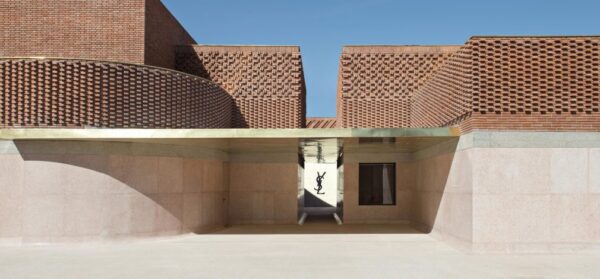
Visitor Information:
Address: Rue Yves St Laurent, Marrakech 40000, Morocco
Opening Hours: Daily from 10:00 to 18:30. Closed on Wednesdays.
Admission: 140 MAD (Adults) / Free (Children under 10)
Museum of Berber Arts Pierre Bergé
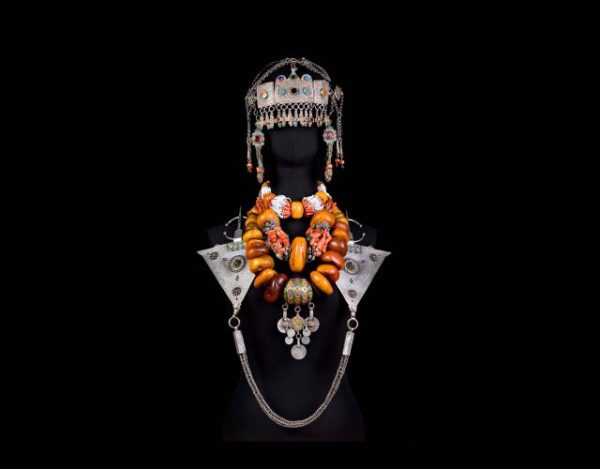
Housed within the enchanting Majorelle Garden, the Musée Berbère is dedicated to the culture and traditions of the Berber people, the indigenous guardians of North African heritage. Inaugurated in 2011 through the initiative of the Pierre Bergé – Yves Saint Laurent Foundation, the museum showcases a stunning collection of artifacts that illustrate the richness and diversity of Amazigh culture. This includes traditional jewelry, ceremonial clothing, weaponry, musical instruments, and everyday objects, all presented in a clear and immersive exhibition. The displays allow visitors to appreciate the aesthetic, symbolic, and practical significance of each piece across different regions of Morocco.
Visitor Information:
Address: Rue Yves St Laurent, Marrakech 40000, Morocco
Opening Hours: Daily from 8:30 to 18:00.
Admission: 230 MAD (Adults) / Free (Children under 10). The ticket includes access to the Majorelle Gardens.
Learn more and buy tickets to the Museum of Berber Arts and Yves Saint Laurent Museum
Maison de la Photographie
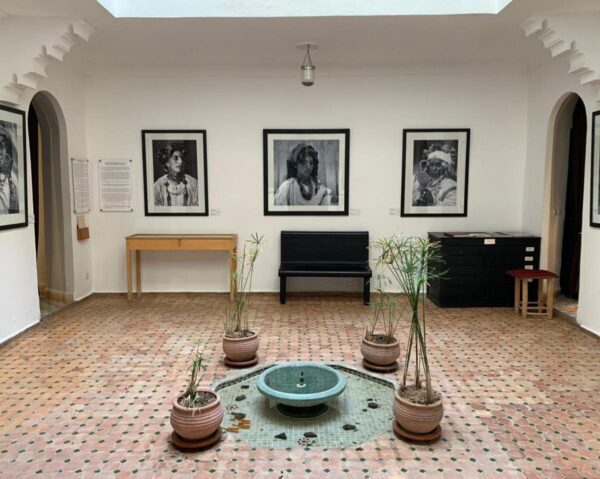
Housed within a beautifully restored former fondouk in the medina, its collection boasts over 10,000 photographs dating from 1870 to 1950. These images poignantly capture the nation’s cultural and geographical diversity, from scenes of daily life and portraits of Berber communities to the majestic landscapes of the Atlas and the Sahara. A particularly rare highlight is a 1957 color documentary by Daniel Chicault, offering a vivid glimpse into the lives of the Berber tribes of the High Atlas.
Visitor Information:
Address: Rue Ahl Fes, 46 Rue Bin Lafnadek, Marrakech 40030
Opening Hours: Daily from 9:30 to 19:00.
Admission: 60 MAD (Adults) / Free (Visitors under 15)
Read more about Maison de la Photographie
Marrakech Museum
Housed within the 19th-century Mnebbi Palace, near the historic Ben Youssef Madrassa, this museum was founded in the 1990s by patron Omar Benjelloun. It presents a diverse collection that spans archaeology, ethnography, historical documents, and contemporary art, offering a harmonious blend of the ancient and the modern. The building itself is a highlight, showcasing traditional Moroccan architecture with a vast central courtyard lavishly decorated with intricate zellige tilework and carved stucco.
Visitor Information:
Address: Place Ben Youssef, Marrakesh 40000
Opening Hours: Daily from 9:00 to 18:00.
Admission: 70 MAD
Read more about the Marrakech Museum
Museum of Confluênces (Dar El Bacha)
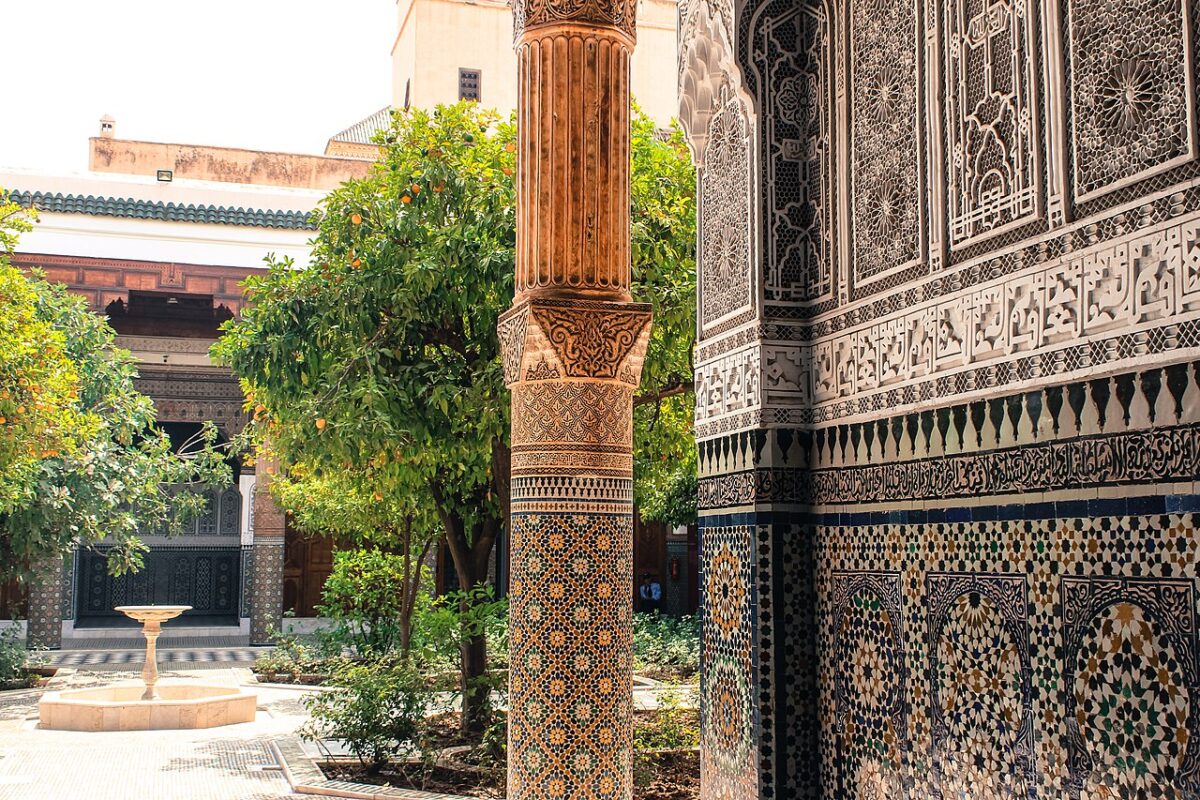 Housed within the historic Dar El Bacha Palace, this museum stands as one of Marrakech’s most iconic cultural landmarks. Built in 1910 as the residence of the powerful Pasha Thami El Glaoui, the palace is a masterpiece of traditional Moroccan architecture, featuring symmetrical courtyards, tranquil fountains, and exquisite zellige mosaics, all complemented by intricately carved stucco and painted cedarwood ceilings. Following a meticulous restoration by the National Museum Foundation of Morocco, it reopened as a museum in 2017. Today, it hosts exhibitions exploring the nation’s cultural and religious diversity, showcasing Islamic art and artifacts from various spiritual traditions. To complete the experience, the on-site Bacha Coffee salon offers a refined selection of Arabica coffees in an ambiance that echoes the palace’s original sophistication.
Housed within the historic Dar El Bacha Palace, this museum stands as one of Marrakech’s most iconic cultural landmarks. Built in 1910 as the residence of the powerful Pasha Thami El Glaoui, the palace is a masterpiece of traditional Moroccan architecture, featuring symmetrical courtyards, tranquil fountains, and exquisite zellige mosaics, all complemented by intricately carved stucco and painted cedarwood ceilings. Following a meticulous restoration by the National Museum Foundation of Morocco, it reopened as a museum in 2017. Today, it hosts exhibitions exploring the nation’s cultural and religious diversity, showcasing Islamic art and artifacts from various spiritual traditions. To complete the experience, the on-site Bacha Coffee salon offers a refined selection of Arabica coffees in an ambiance that echoes the palace’s original sophistication.
Visitor Information:
Address: Dar El Bacha Museum, Rue Dar el Bacha, Medina, Marrakech, Morocco
Opening Hours: Daily from 9:30 to 18:00. Closed on Mondays.
Admission: 70 MAD (Adults) / 30 MAD (Children under 12)
Read more about the Confluences Museum (Dar El Bacha)
Dar Si Said Museum
Also known as the National Museum of Textile and Carpets, this is one of Marrakech’s oldest and most emblematic cultural institutions. Housed within a 19th-century palace commissioned by Si Saïd ibn Musa, the Minister of War and brother of the powerful Grand Vizier Ba Ahmad, the building itself is an architectural jewel. It features serene interior courtyards, Andalusian-style gardens, and is adorned with intricately carved cedarwood ceilings and elaborate zellige mosaics. Following a comprehensive renovation, the museum reopened in 2018 with a renewed focus on textile arts, celebrating the rich weaving and carpet-making traditions of southern Morocco. Its collections encompass Berber carpets, fine textiles, jewelry, ceramics, and carved wooden objects, offering a comprehensive insight into the nation’s diverse craftsmanship.
Please Note: The museum is temporarily closed. For future visits, it is located at 8 Rue de la Bahia, Marrakech 40000.
Marrakech Music Museum, or Mouassine Museum
Nestled within the Marrakech medina, this museum is housed in a meticulously restored 16th-century historic house. It showcases a diverse collection of traditional musical instruments, celebrating the rich sonic heritage of Andalusian, Berber, and African cultures. Beyond its permanent exhibitions, the museum brings history to life by organizing weekly traditional music concerts, held every Monday, Wednesday, and Friday at 6:00 PM, offering visitors a truly immersive and living museum experience.
Visitor Information:
Address: 4, 5 derb el hammam, Marrakesh 40000
Opening Hours: Daily from 10:00 to 19:00.
Admission: 60 MAD (Adults) / Free (Children under 15)
Read more about Marrakech Music Museum (Mouassine Museum)
Tângier
The Kasbah Museum of Mediterranean Cultures
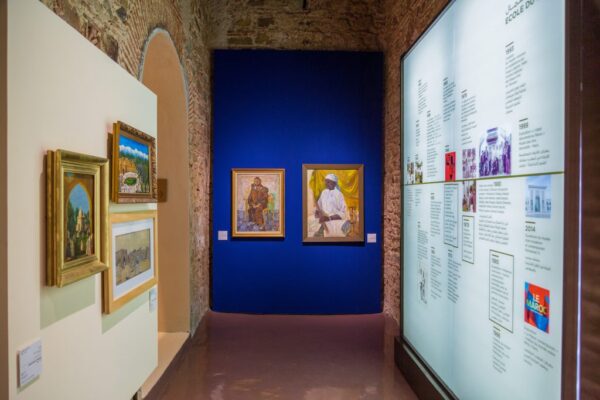
Housed within the majestic Dar el-Makhzen palace, perched at the highest point of the Tangier medina within the Kasbah, the Museum of Mediterranean Cultures offers a journey through time. This renovated museum, reopened in 2016, presents a rich collection spanning from prehistoric artifacts to treasures of Carthaginian, Roman, and Islamic civilizations. Beyond the historical narrative, the museum features a Contemporary Art Space, inaugurated in 2021 within the palace’s former prisons, which hosts temporary exhibitions by Moroccan and international artists. Visitors can wander through ornately decorated halls adorned with carved stucco, zellige mosaics, and cedarwood ceilings, and relax in serene interior courtyards with marble fountains. It is a place where the past and present engage in a seamless dialogue.
Visitor Information:
Address: Kasbah Square, Tangier
Opening Hours: Wednesday to Sunday, 10:00 to 18:00. Closed on Tuesdays.
Admission: 30 MAD (Combined ticket for the Museum of Mediterranean Cultures and the Contemporary Art Space)
Read more about Kasbah Museum of Mediterranean Cultures
Ibn Battouta Museum
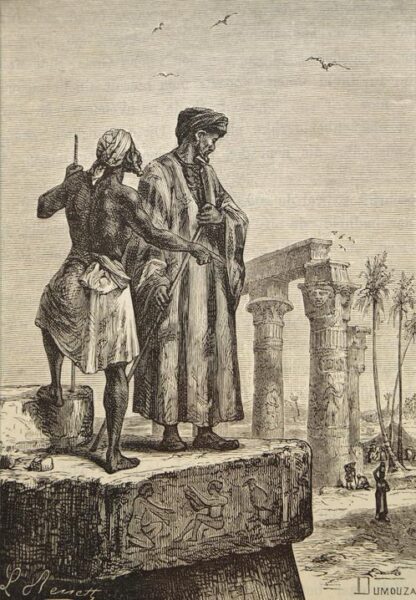 Housed within the historic Borj En-Naâm tower near the entrance to the Tangier Kasbah, the Ibn Battouta Museum is a tribute to the life and journeys of the city’s most celebrated son, the 14th-century Moroccan explorer. Born in Tangier in 1304, Ibn Battouta embarked on an epic 29-year odyssey, traversing over 120,000 kilometers across Africa, Asia, and Europe. The museum offers an engaging, interactive exhibition that retraces the stages of his monumental travels through detailed maps, historical artifacts, and vivid reconstructions, bringing to life the diverse cultures and civilizations he encountered.
Housed within the historic Borj En-Naâm tower near the entrance to the Tangier Kasbah, the Ibn Battouta Museum is a tribute to the life and journeys of the city’s most celebrated son, the 14th-century Moroccan explorer. Born in Tangier in 1304, Ibn Battouta embarked on an epic 29-year odyssey, traversing over 120,000 kilometers across Africa, Asia, and Europe. The museum offers an engaging, interactive exhibition that retraces the stages of his monumental travels through detailed maps, historical artifacts, and vivid reconstructions, bringing to life the diverse cultures and civilizations he encountered.
Visitor Information:
Address: Borj Naam, Tangier (Kasbah)
Opening Hours: Daily from 8:00 to 18:00.
Read more about Ibn Battouta Museum
The American Legacy Museum
Located in the Tangier medina, this museum holds a unique historical status as the first American diplomatic property abroad and the only U.S. National Historic Landmark located outside the United States. The building was gifted in 1821 by Sultan Moulay Suliman to the U.S. government, symbolizing the enduring friendship between the two nations—a relationship formalized by the Moroccan-American Treaty of Friendship of 1786, which remains in effect today. For 140 years, the legation served as an embassy and consulate and played a strategic role during World War II as an intelligence operations center.
Today, the museum functions as a vibrant cultural center, hosting exhibitions on Moroccan-American relations, a research library, and community programs—including Arabic literacy courses for women from the medina. A notable highlight is the wing dedicated to writer and composer Paul Bowles, who lived in Tangier for decades.
Visitor Information:
Address: 8 Rue d’Amerique, Tanger
Opening Hours: Monday to Friday, 10:00–17:00; Saturday & Sunday, 10:00–15:00
Admission: 50 MAD
Read more about the American Legacy Museum
Fes
Fes, one of Morocco’s oldest and most spiritual cities, is truly an open-air museum with its labyrinthine medina, centuries-old madrasas, and atmosphere steeped in history. Beyond the cultural wealth visible in its streets, Fes is also home to remarkable museums that stand out in Morocco’s museum landscape. The Borj Nord Museum houses one of Africa’s largest weapon collections, offering unique insights into the region’s military history. Meanwhile, the Nejjarine Museum of Wood Arts and Crafts celebrates the city’s artisanal heritage, masterfully restored within a historic funduq where the architecture itself is as valuable as the exhibits. These two distinct institutions, each with its own theme and atmosphere, reveal the diversity and depth of Fes’s cultural identity, providing experiences that go beyond the more conventional approach of typical Moroccan museums.
Nejjarine Museum of Wood Arts and Crafts
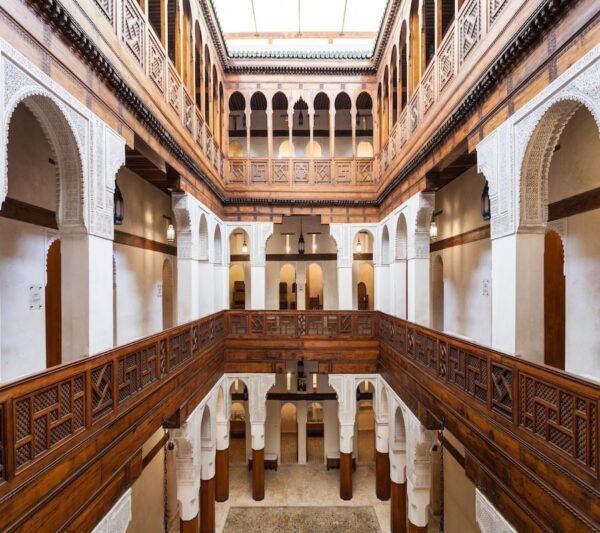
Nestled in the heart of the Fes medina, this museum pays tribute to Morocco’s rich tradition of woodworking and carpentry. Housed in the historic Funduq al-Najjarin, an 18th-century caravanserai that once lodged traveling merchants and served as a trading post, the building itself is a UNESCO World Heritage site renowned for its traditional Moroccan architecture. It features a central courtyard surrounded by carved wooden galleries and an impressive façade adorned with intricate zellige tilework and stucco.
The museum’s collection includes a wide array of wooden objects—from carpentry tools and furniture to musical instruments, ornate doors, and religious artifacts, many dating back several centuries. The exhibits highlight the stylistic diversity between Amazigh and Andalusian traditions, reflecting the cultural richness of Morocco. In addition to the items on display, the building itself is a masterpiece, with architectural details that showcase the exceptional skill of local artisans.
Visitor Information:
Address: 327F+WJ5, Fes
Opening Hours: Daily, 10:00–17:00
Admission: 20 MAD
Read more about Nejjarine Museum
Borj Nord Museum
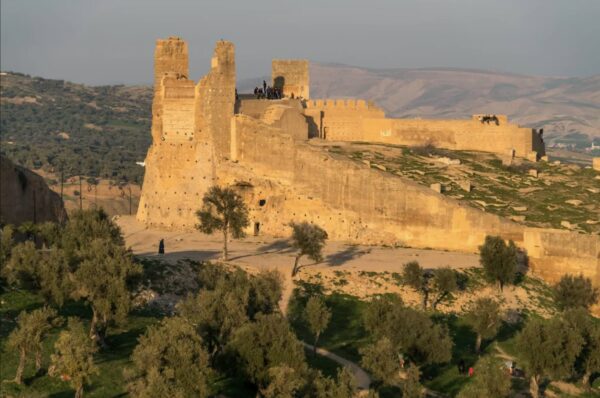
Officially known as the Fes Arms Museum, Borj Nord was constructed in 1582 under the order of the Saadian Sultan Ahmad al-Mansur. The fortress was designed with influences from Portuguese military architecture, featuring angular bastions adapted for gunpowder warfare. Initially built to oversee the local population, it later served as a barracks and prison during the French Protectorate period. In 1963, it was repurposed as a museum and now houses one of Africa’s largest arms collections, with approximately 5,000 pieces from 35 countries, dating from prehistory to the 20th century. Highlights include swords, spears, rifles, and a 12-ton cannon used in the 1578 Battle of Alcácer-Quibir. In addition to the exhibits, the museum’s terrace offers panoramic views over the Fes medina.
Visitor Information:
Address: 3288+W24, Fes
Opening Hours: Daily, 9:00–17:00 (Closed on Mondays)
Admission: 10 MAD
Read more about Borj Nord Museum
Meknes
Dar Jamai Museum
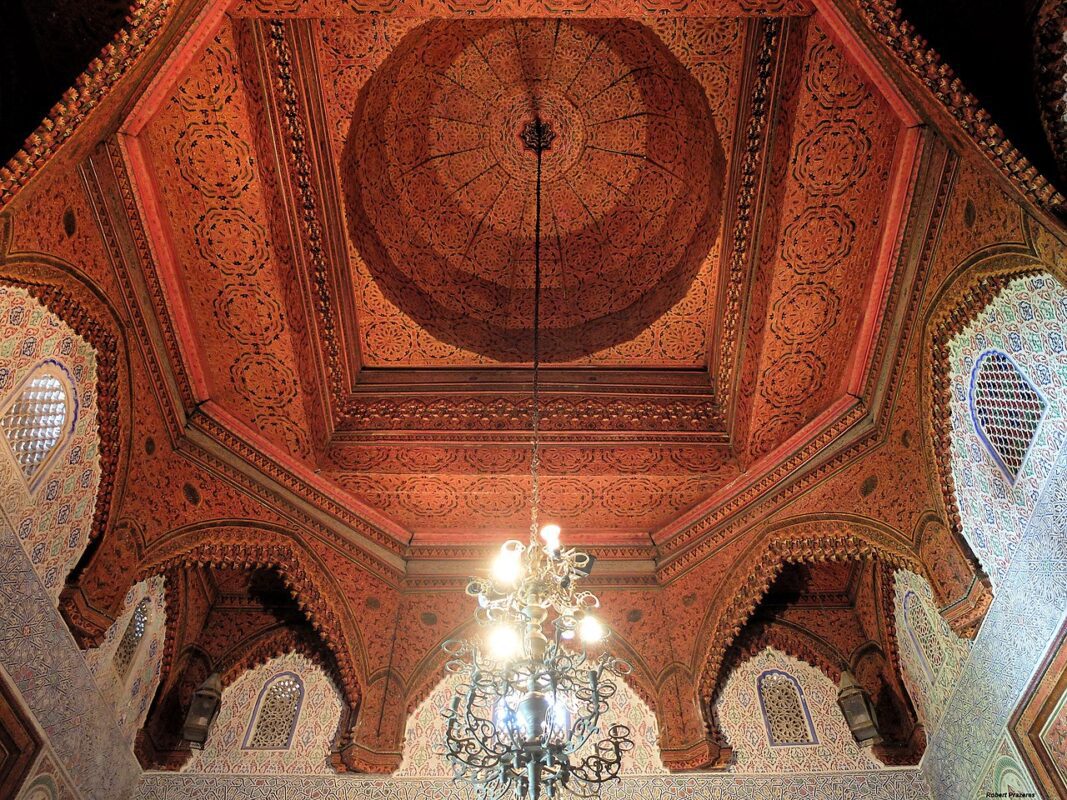 Located on the historic Place el-Hedim, this museum stands as one of the city’s most iconic cultural landmarks. Housed within a palace built in 1882 by Mohamed ben Larbi Jamaï, vizier to Sultan Moulay Hassan I, the building exemplifies the opulence of traditional Moroccan architecture, featuring exquisitely carved stucco, intricately sculpted wood, and vibrant zellige mosaics. Throughout its history, the palace has served as an aristocratic residence, a military hospital during the French Protectorate period, and since 1920, as a museum dedicated to the traditional arts and crafts of Morocco.
Located on the historic Place el-Hedim, this museum stands as one of the city’s most iconic cultural landmarks. Housed within a palace built in 1882 by Mohamed ben Larbi Jamaï, vizier to Sultan Moulay Hassan I, the building exemplifies the opulence of traditional Moroccan architecture, featuring exquisitely carved stucco, intricately sculpted wood, and vibrant zellige mosaics. Throughout its history, the palace has served as an aristocratic residence, a military hospital during the French Protectorate period, and since 1920, as a museum dedicated to the traditional arts and crafts of Morocco.
The museum’s collection showcases a wide range of artifacts that reflect the cultural richness of the Meknes region and its surroundings. Highlights include painted ceramics, carved wooden furniture, embroidered textiles, traditional jewelry, musical instruments, and finely crafted metalwork. Among the most notable exhibits are the 17th-century minbar (pulpit used by the imam for sermons) and the maqsura (enclosed area) from the Lalla Aouda Mosque, offering a rare glimpse into historic Islamic religious architecture.
Visitor Information:
Address: VCVM+F9V, Place el-Hedim, Meknes
Opening Hours: Daily, 10:00–18:00 (Closed on Tuesdays)
Admission: 30 MAD (Adults), 20 MAD (Under 18), 10 MAD (Under 10)
Read more about Dar Jamai Museum
Safi
National Museum of Ceramics
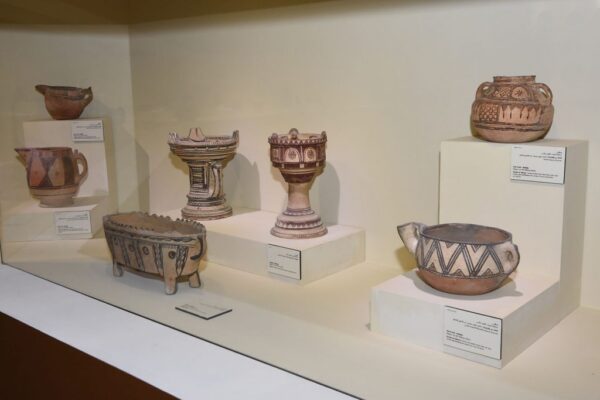 Located in the coastal city of Safi, this museum is dedicated to preserving and celebrating Morocco’s rich ceramic tradition, with special emphasis on the distinct Safi pottery style. Housed within the historic Kechla Citadel, a 16th-century Portuguese fortress, the museum offers visitors an immersive experience that combines the architectural beauty of the building with a diverse collection of ceramic pieces from various regions of Morocco. These works—many of archaeological and ethnographic significance—range from everyday utensils to elaborate decorative items, reflecting the diversity and richness of the country’s ceramic heritage.
Located in the coastal city of Safi, this museum is dedicated to preserving and celebrating Morocco’s rich ceramic tradition, with special emphasis on the distinct Safi pottery style. Housed within the historic Kechla Citadel, a 16th-century Portuguese fortress, the museum offers visitors an immersive experience that combines the architectural beauty of the building with a diverse collection of ceramic pieces from various regions of Morocco. These works—many of archaeological and ethnographic significance—range from everyday utensils to elaborate decorative items, reflecting the diversity and richness of the country’s ceramic heritage.
In addition to its permanent exhibitions, the museum plays an active role in promoting geotourism and preserving the region’s geological heritage. It offers educational programs, guided interpretive tours, and pottery workshops where visitors can experience traditional clay modeling and decoration techniques firsthand.
Visitor Information:
Address: Rue Al Medina El Mounawara, Safi
Opening Hours: Daily, 10:00–18:00 (Closed on Tuesdays)
Admission: 20 MAD (Adults), 3 MAD (Children)
Read more about the National Museum of Ceramics
Contact us for more travel information!

